Story by Brandes Elitch
Photos by Hugues Vanhoolandt unless otherwise noted
The fifteenth edition of The Quail, A Motorsports Gathering, was held on August 15, 2017, at the Quail Lodge and Golf Club, located in Carmel Valley, California, a few hours south of San Francisco. About 225 automobiles and motorcycles were exhibited in what has been described elsewhere as a garden party atmosphere, carefully planned and curated by Gordon McCall https://velocetoday.com/gordon-mccall-authenticity-and-continuity/ and his staff. This is an exceptional event, and in this brief article I will try to convey why this is the case.
If you have ever planned a conference, event, or large scale meeting, you know that there are some best practices that make the difference between an ordinary event and a spectacular one. Most car shows are boring – rows and rows of cars on display, some of them not all that interesting – that await the judges who will determine success or failure for the entrants. Except for single marque fanatics, knowledgeable automotive historians and enthusiasts, and the owners and their friends and family, there is little or no excitement for the average person, particularly since the judging seems arcane and meaningless to most people, including me.
The Quail, however, is an exciting show.
Famed conference planner Louis Rosenfeld has identified some best practices, which include:
-create and cultivate a community
-create events to get the community together
-if you don’t sweat the details, the attendees will
-every single detail counts
-if the attendees are talking about how well-produced your event was, they come back next year
Gordon knows these rules very well, from deciding which themes to feature, which cars to invite, curating exotic car manufacturers and getting them to show their latest projects or concept cars, as well as providing test drives, and installing five world class restaurants, each of which prepares a totally different menu. The show runs from 10 am to 4 pm. I am somewhat embarrassed to say that I only visited one of these restaurants, because there are just too many other things to see. However, I did manage multiple visits to each cocktail bar, an idea I hope catches on with other concours d’elegance.
This year the themes were Originals, Mid-Engine Marvels, PreWar and PostWar Sports and Racing, Supercars, the Great Ferraris, and Sports and Racing motorcycles. The show is divided by a small road that runs through the area, and additional special cars are arrayed on the road that are not part of the show itself, but which would be accepted at any concours, and you could spend an hour there.
A unique feature is called “The Best of The Best.” No fewer than 28 judges, luminaries in the field of automobile design from all over the world, chose from among eight finalists, including a Pegaso Z-102, a Lamborghini Miura, a Lancia Astura, a Ferrari 375 mm, a Ferrari 400 Superamerica, a Maserati A6GCS, an Alfa Romeo 8C 2900, and the Dubonnet Xenia coupe. I would have chosen the Alfa, but the judges chose the Maserati. In truth, all of these are truly spectacular and there is no bad choice.
As my friend Rich says, “Isn’t it great that everyone likes something different?” and it is good to keep that perspective. Here are the ten cars that were my personal “best of the best.” You would choose others, no doubt, but I hope you like them.
Jaguar XJ 15
Not all the great Jaguars and Jaguar race cars were built in the fifties and sixties. The XJ 15 was produced by Jaguar Sport, a subsidiary of Jaguar and Tom Walkinshaw Racing, between 1990-1992. Only 53 examples were constructed. The U.S. MSRP was almost a million dollars. It was based on the Le Mans winning Jaguar XHR-9. The body was designed by Tony Southgate and styled by Peter Stevens, who did the McLaren F1. It was the first fully carbon-fiber road car. Jaguar designed it as a road-going race car so it complied with British construction and use regulations. It is mid-engine, powered by a 450 hp 24 valve V12 motor of 6 liters with a 0-60 time of 3.9 seconds and a top speed of 191 mph. After Jaguar withdrew from sportscar racing in 1994, Nissan approached TWR to develop their own race car based on the XJ 15, and they subsequently took four of the top ten places in the 1998 Le Mans race.
Alfa Romeo 8C 2600 Monza
This is not really a 1932 Alfa; it is a recreation/replica, built by a company in Argentina called PurSang. It is an exact replica, built from the blueprints and using the same materials as the original car, as well as the same techniques with which the car was originally constructed. The 8C, designed by Vittorio Jano, with a gear drive twin cam motor and a Roots supercharger, is one of the greatest cars ever built, along with its successor, the 8C 2900 of 1936-1941. . It won the Targa Florio in 1931, 1932, and 1933, and various Grands Prix, including Monaco in 1932 and Monza. PurSang has its own foundry, CNC machining facility, and they make their own tires and construct the body with an English wheel, using modern metallurgy. It would be virtually impossible to tell the difference from an original car. At first I was skeptical about this kind of effort, but upon reflection I consider it to be a Good Thing. (www.pursangweb.com.ar/)
Facel Vega
I have owned an HK 500 for a number of years, so naturally I am biased and was very pleased to see this car, turned out to a very high standard indeed. It is a 1958 FVS Series Four, sold new in Dallas, and driven on the street until 1968, when it was disassembled for restoration. In 2012 the Dallas restoration shop of Wayne Davis acquired the car and performed the restoration. The car includes a very rare five piece set of factory luggage. It has had only five owners in 59 years. There is an active marque club in France (www.facel-vega.asso.fr).
1991 Maserati Barchetta
Maserati made 15 examples of this car, and today it is estimated that only five or six are still in original working race tune. It has a 2-liter double turbo V-6 motor, putting out 330 bhp with a 750kg curb weight. The factory wanted to build a road version to compete with the Ferrari F50, but unfortunately this never happened. It is a forgotten supercar of the 1990s.
Maserati A6GCS “Best of the Best”
This is an obvious choice. It was one of four cars ordered by the Roman dealer in 1954, and the only one retaining its original chassis and body. Pininfarina built the body on the chassis based on the successful two-liter racing car.
Alfa Romeo Disco Volante
I would consider Touring Superleggera the greatest of the carrozzeria. The original business closed its doors in 1966, but this car was built in 2009, on a 2009 8C coupe. The construction took 4000 man-hours. It was first featured in the 2012 Geneva motor show, and seven other cars were built. This car has a nautical theme, with a Marine Blue color and wood features in the interior.
ATS
This car, owned by Bruce Milner, was judged Best in Show. ATS was founded by Count Volpi and Ferrari engineers Carlo Chiti and Giotto Bizzarrini, who left Ferrari following the famous “Palace Revolt.” They wanted to build a sports car to compete with Ferrari, and this is the result: Italy’s first mid-engined street car. It is believed that only eight cars were built. It is quite striking in person. It was built as a lightweight combination street/track car with the larger 2.5 liter motor, sliding windows, and racing seats. It is not surprising that it took full honors at the show.
Packard
This car is owned by Anne Brockington Lee and the Robert Lee Automobile Collection. Earlier this year, the Classic Car Club of America (http://www.classiccarclub.org/) had their annual meeting in Reno, where this collection is located, and club members were privileged to tour the collection, after which Ms. Lee graciously hosted a cocktail party in the museum. This is one of the largest collections of Rolls-Royce and Ferrari motorcars plus various other spectacular cars. You may remember the Horch that they showed last year, after the in-house restoration of a basket case. This year I saw their current project in the back of the shop, a Lagonda V12 drophead coupe, getting a ground up restoration, and I am looking forward to seeing that next year. I found this Packard to be absolutely stunning, the Graber coachwork totally transforming this car. Graber made only a few Packards, and this car was the 1938 Geneva show car. It took my breath away.
Cunningham C-3 Continental Vignale coupe
This car was shipped from the factory in Florida to the Vignale factory in Italy in 1952 and the finished car was returned in December. In 1964, it was recovered by H&M Auto Wrecking in California, after a crash. It was repaired, and the second owner kept it until 1974, when it was sold to the third owner who did a complete restoration. After two subsequent owners, it was dismantled and sold yet again. In 2003, James Taylor (the current owner) bought the disassembled car and began a total restoration, which he completed in 2015.
Alpine M64
This model was the class winner at the 1964 24 hours of Le Mans (Index of Thermal Efficiency) and 12 hours of Reims. It is one of three produced. Alpine is a highly revered marque in France, similar to the Cobra in the U.S. This car has a 1149 cc inline dohc four cylinder motor, Hewland 5-speed box, independent front and rear suspension, and four-wheel Girling disc brakes. After retiring from racing, it was retained by Alpine as a prototype for the A210 and the rear section was modified with fins by the factory. It was sold at the Monaco auction in 2014 after 37 years with the previous owner, and subsequently received a full restoration
Chrysler New Yorker Deluxe/Newport
Owned by Randy Kunes, this 1953 Chrysler was stunning. The owner’s father bought it in 1955 and he bought it from his father in 1970. When Randy joined the Air Force, his father stored it for twenty years while he was on active duty. When he returned home, Randy started a ten year restoration, much of which he did himself. Along with the Imperial, this was the top of the line Chrysler, and only 3715 were built. It was constructed to the highest standard, and of course features the famous hemi-head V-8 motor which debuted in 1951. More at: www.1953chryslernewyorker.com.
Delighting the customers
Where I work we try to surprise and delight our customers, and there is no question that Gordon and his staff did just that. The planning for this show must take a whole year. My only regret for the whole weekend is that I did not get to meet Ian Callum, the Jaguar design chief, but this is an incentive to come back next year.
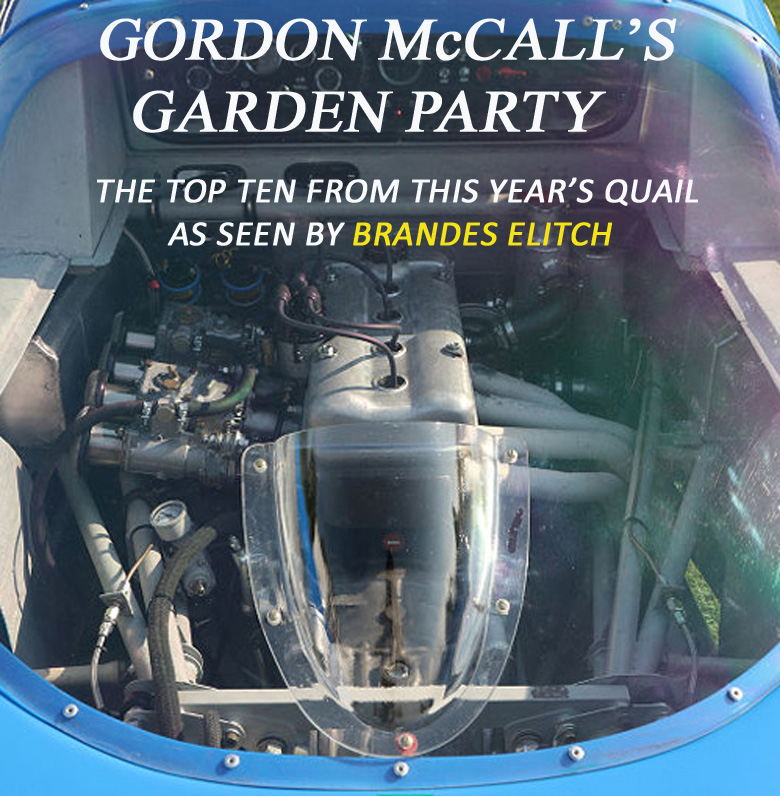
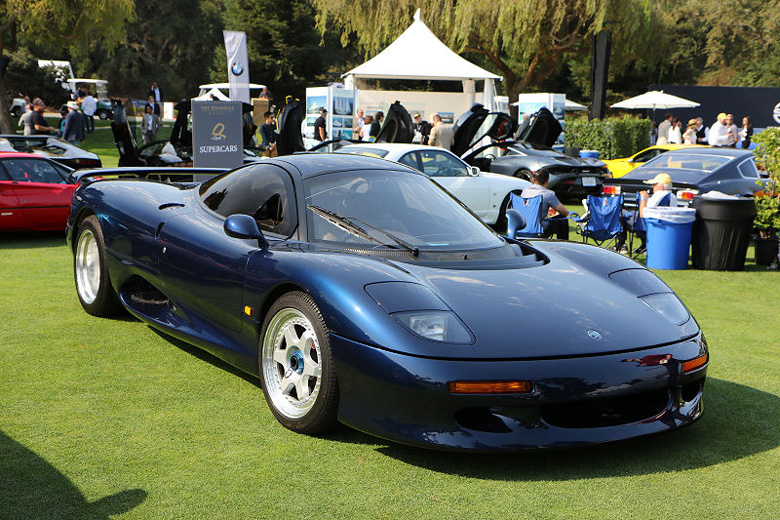
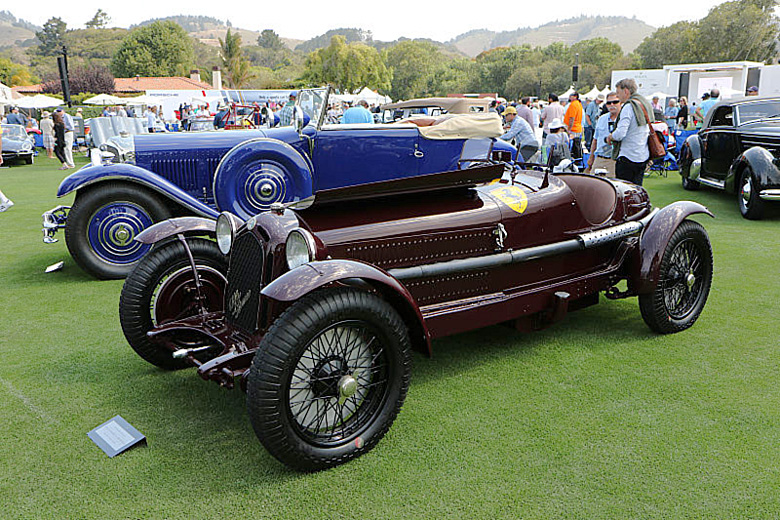
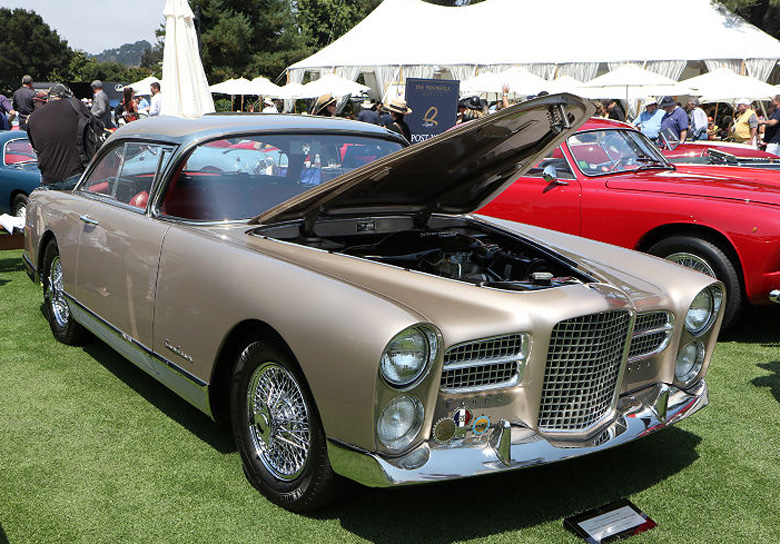
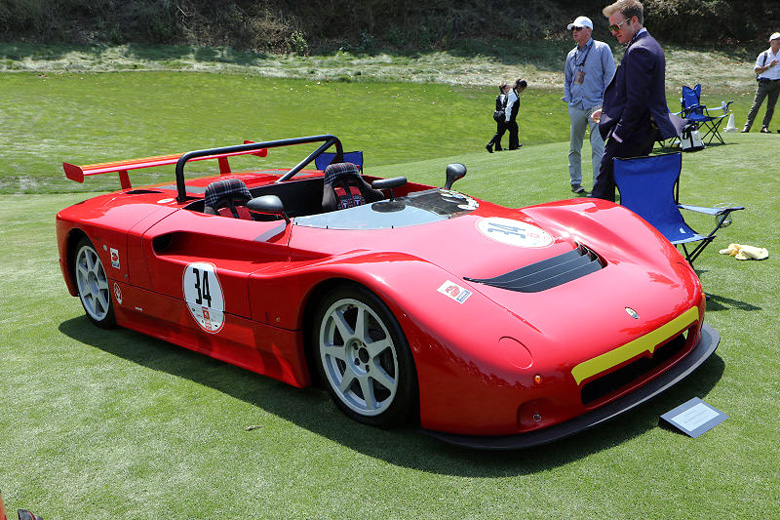
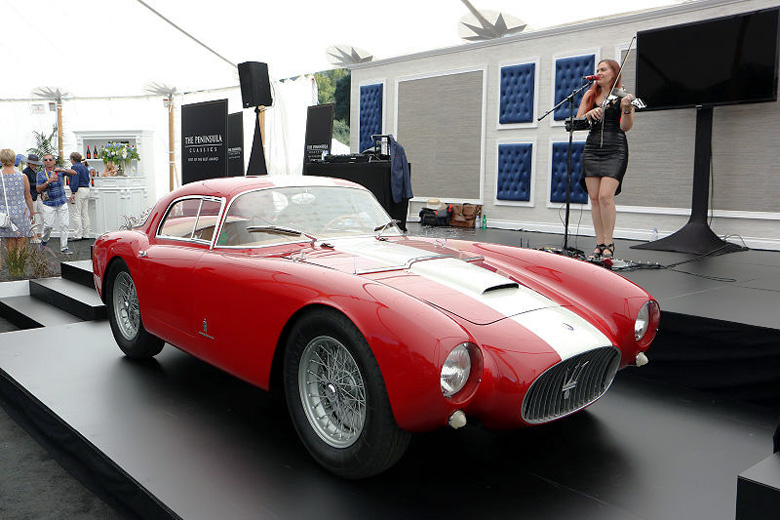
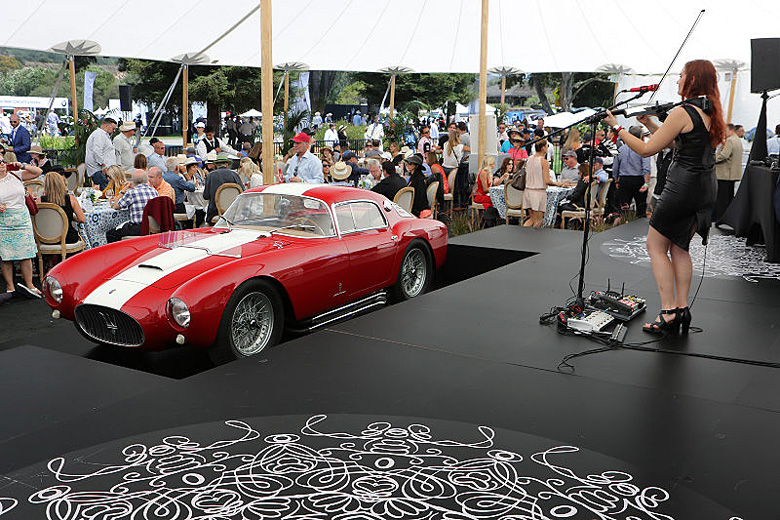
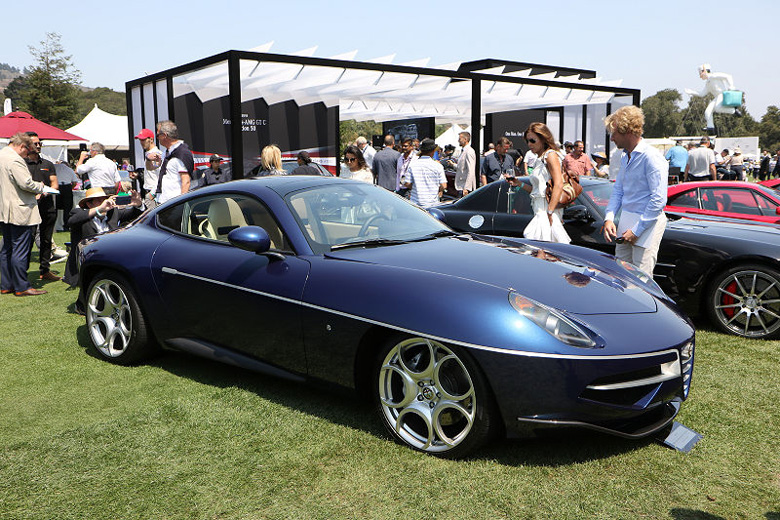
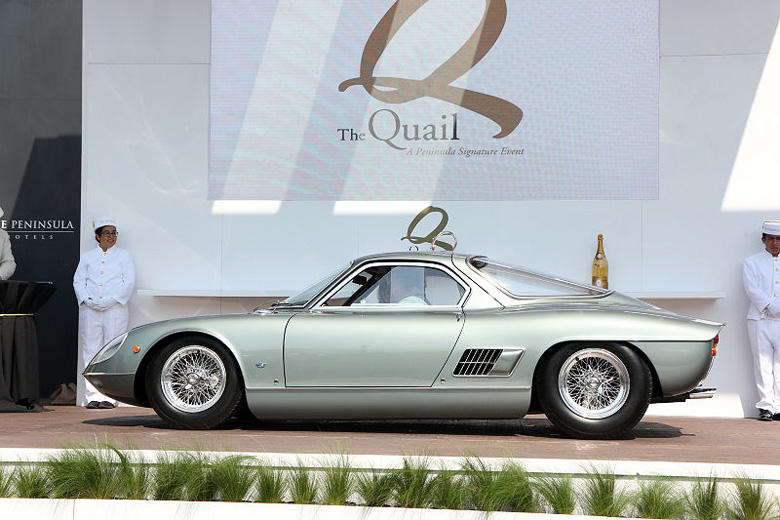
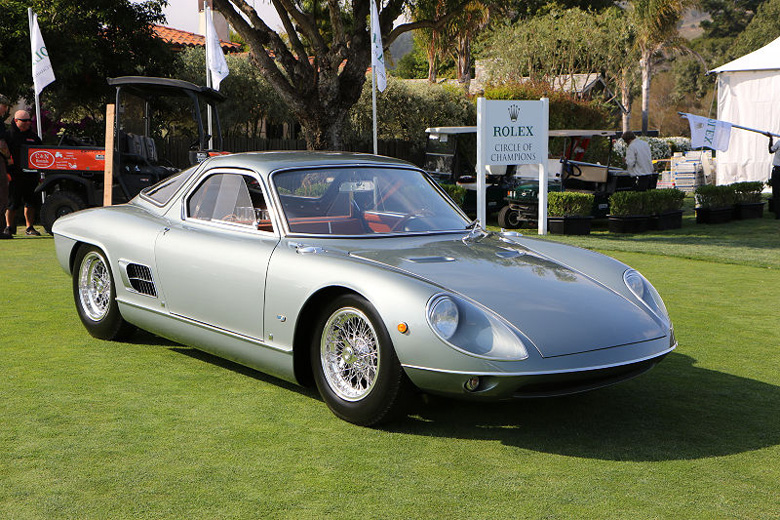
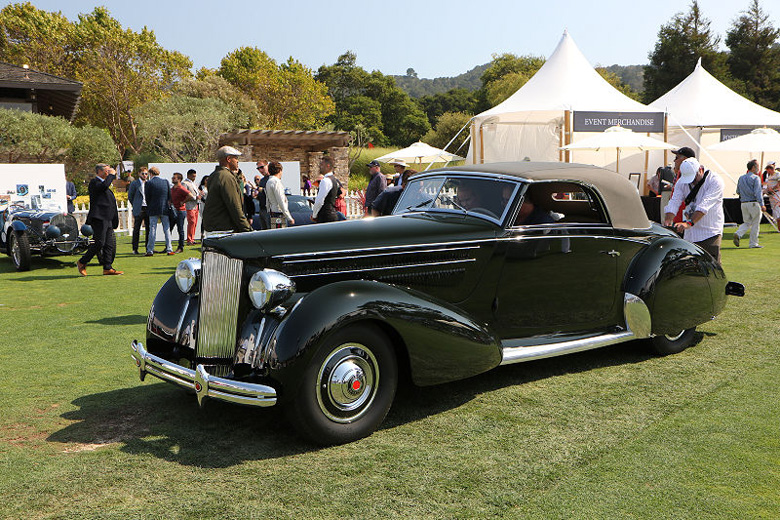
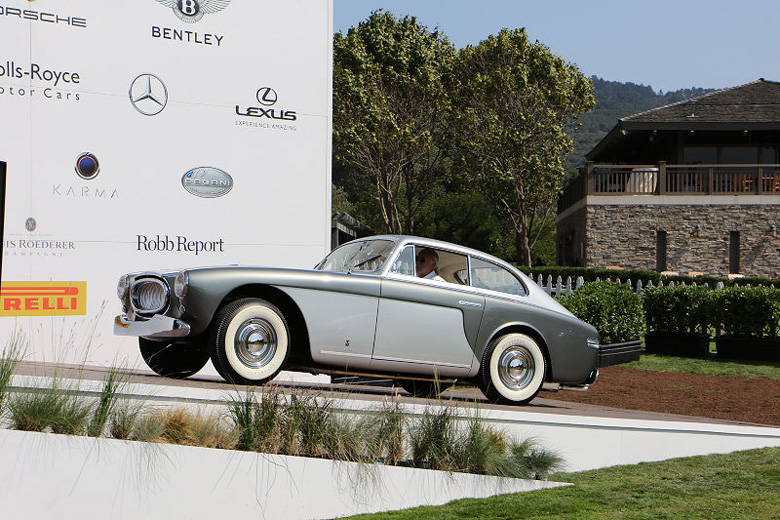

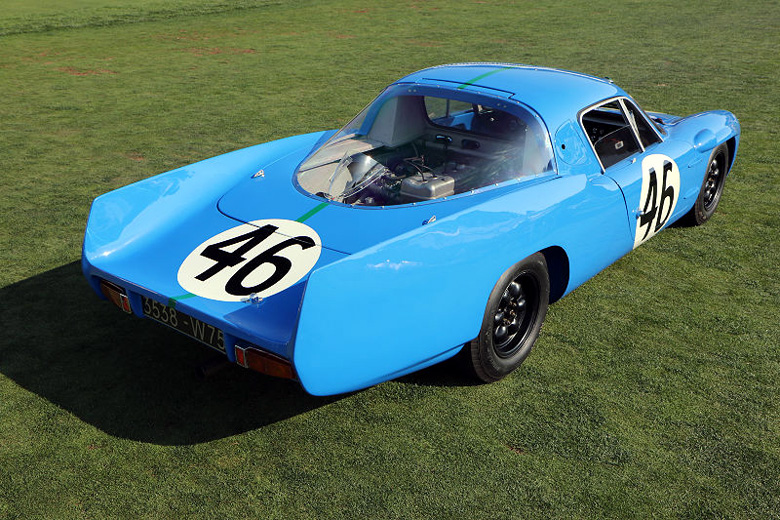
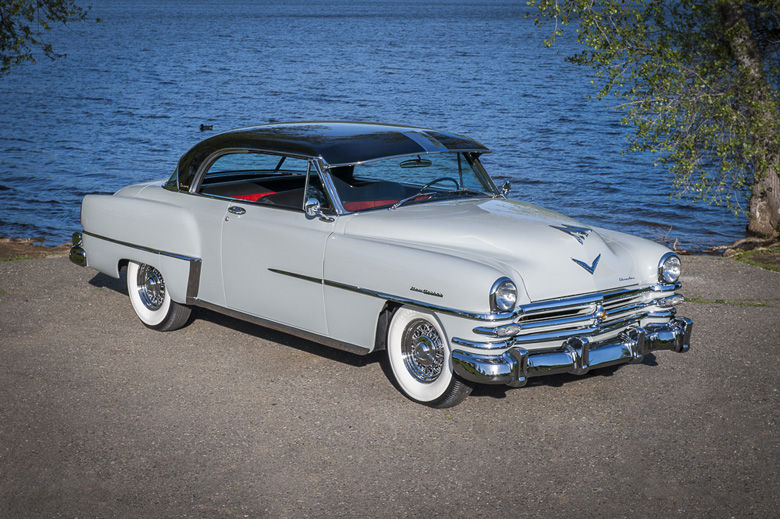
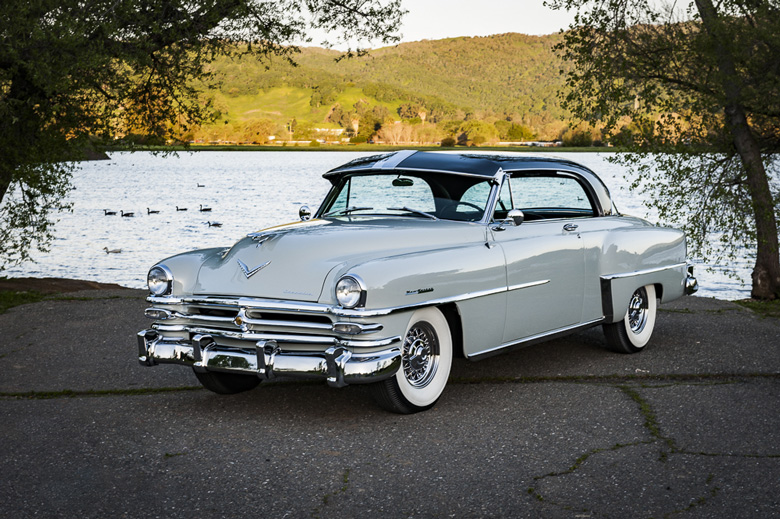
Your enthusiasm for these cars comes through and rubs off on readers, even those of us (like me) who know very little about cars. Sounds like a terrific show. The photos and text work perfectly in tandem to tell the story.
my late college roommate tim Bentley, whose dad was a banker in hattiesburg, wanted a car to go to college. one day there appeared a 1954 white over maroon Chrysler hardtop with wire wheels. lovely. popped the hood and there was that 119-hp spitfoo six. and the slush box semi-automatic tranny (I will continue to use that word). but it was a delight to drive around town–once upshifted into the 3-4 range, after every stop just floor the accelerator and waft away gently
Great article; well written and fascinating to one who is not familiar with most of the vehicles mentioned. Thanks for this.